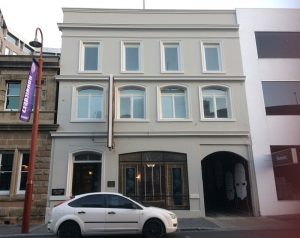
Diagnosis of a Balance Disorder
The Tasmanian Balance Clinic
How is a Balance Disorder Diagnosed?
There are many causes of Balance Disorders. Seeing an Audiologist is an important step…
Causes of Balance Disorders can be unclear. Technological advancements bring recognized pathways to diagnosis. Tests that range from simple and non-invasive to very complex are improving diagnosis accuracy. The subsequent treatment for sufferers of Balance Problems is more appropriate and targeted than ever before.
Specialist Doctors, Audiologists and the client work together as a multidisciplinary team to reach a diagnosis. Balance of the human body needs 3 separate parts – the visual, the vestibular, and feedback from sensors that occur naturally in the muscles and joints (proprioception). The range of testing methods evaluates the potential component parts of Balance.
Steps in Balance Disorders Diagnosis
Gathering all the relevant information is required to identify the cause. The steps include:
- Discussion with the Client: Evaluation of your medical history from the onset up to the current date. During this step, the duration and extent of the problem, family history, balance questionnaires, and previous exposure provides diagnosis clues. Evaluation starts at your local doctor’s clinic and continues in more detail when you see an audiologist and/or an ENT specialist.
- Physical examination. Your local doctor will check on your general health and proceed to some physical examinations. Ears examination focuses on abnormalities, infection or hearing difficulties. Your blood and sugar levels fluctuations get monitored because low levels lead to dizziness. When the two steps fail to give results, the doctor will refer you for more specialized
- Vestibular testing. These tests check for inner ear abnormalities and more specialised testing involving your eyes and muscles and joints.
Each test adds valuable information to the overall picture of your Balance Disorder.
Tests for Diagnosing Balance Disorders
Several tests are available for balance disorders diagnosis. Each test adds valuable information to the overall picture of your Balance Disorder. The tests are done in specialized clinical settings, and advanced vestibular laboratory settings. These tests include:
Hearing Tests
The hearing tests measure the hearing function. Your inner ear has both the balance and hearing organs, and for an effective hearing evaluation, you will require several hearing tests. They include:
- Pure tone testing (audiometry). The test measures your ability to hear sounds at varying volumes and pitches. You need to respond when you hear a tone in your earphones. The results are then recorded on an audiogram.
- Speech Testing. You get subjected to a quiet or noisy environment, and the speech reception threshold (SRT) recorded.
- Otoacoustic Emissions (OAEs). Your hair cells generate vibrations (OAEs) in your inner ear. With a probe that has a microphone and a speaker, the specialist doctors and audiologists can determine the damage, levels of fluids, and blockage.
- Electrocochleography (ECOG). Measures how you respond to sound from the nervous system through the use of electrodes.
- Auditory Brainstem Response Test (ABR). Electrodes are attached to earlobes, head, and scalp. It is meant to screen particular types of hearing loss by measuring brainwave activity.
Vestibular Dysfunction Specific Tests
Vestibular dysfunction tests use complex equipment for balance disorders diagnosis, especially on abnormal movements. The tests include:
- Electronystagmography (ENG). The test uses computers to record your eye movements while focusing on a certain target. You will be required to focus on varying positions for your otolaryngologist (an ear, nose, and throat specialist) to observe various movements to determine the functionality of the cranial nerves.
- Videonystagmography (VNG). Similar to ENG. However, you have to wear special video goggles meant for recording.
- Caloric Testing. It’s a component of ENG and VNG. The test evaluates your eye responses after modulation of the ear canal through changes in temperature.
Rotation Tests
Rotation tests evaluate how well the inner ear and eyes work together. Through the use of goggles and electrodes, you need to rotate the head at varying speeds and the movements recorded. The tests give detailed information beyond the ENG/VNG. These tests include:
- Auto head rotation. Here, you focus on a fixed target and rotate your head several times within a short period.
- Computerized rotary chair. From a motorized chair that swivels either side, the movements get recorded.
- Screening test. The specialist doctors and audiologists tend to watch your eyes while turning the subject sideways.
- Visual-vestibular interaction assessment. It’s a test associated with rotational testing. It examines both visual and vestibular stimuli. The information helps to know how the brain processes data.
Video Head Impulse Testing (VHIT)
VHIT is similar to rotational testing, and it evaluates the vestibulo-ocular reflex. The difference is that VHIT uses small and quick head movements compared to moderate motions used in rotational testing.
Vestibular Evoked Myogenic Potential (VEMP)
VEMP testing aims to know if vestibular organs and related nerves work normally. The tests focus on the neck and eye muscles. It utilizes electrodes and earphones. The sound is played thus stimulating the vestibular organs. Electrodes record the muscle responses.
Posturography Testing
In posturography testing, your examiner utilizes the computer analysis and visual stimuli to assess the eye movements. The main testing method here is the computerized dynamic posturography (CDP) that shows how effective the inner ear is functioning.
Imaging Tests
MRI and CT scans determine the underlying conditions that might affect the vestibular system leading to balance problems. The imaging tests include the following.
- Magnetic Resonance Imaging. MRI uses the radio waves and magnetic field to scan the brain and structures within the inner ear to identify tumors, vestibular abnormalities, and stroke.
- Computerized Axial Tomography (CT, OR CAT). It examines the temporal skull bone to know the possibility of fractures within the inner ear. CT is the best method for studying bony structures.
Which tests do You Need?
Depending on your circumstances, tests will be recommended for you. Some tests are used immediately and in combination, while others are used when a specialized investigation is needed
The Diagnosis of a Balance Disorder
The Specialist doctor or Audiologist will make the balance disorders diagnosis once they have gathered all the relevant information. Interventions or treatments can then be started. There are a range of Diagnostic Tests that are conducted by specialist Audiologists. Success depends on thorough, accurate, and timely evaluation. Please do not hesitate to seek help if you are experiencing a balance problem.
This is no value in waiting until symptoms worsen. Call now at (03) 6223 5444 to make an appointment at The Tasmanian Balance Clinic to start the assessment process.
How to get help
Tasmanian Centre for Hearing
158 Collins Street
Hobart 7000
ph (03) 62235444
